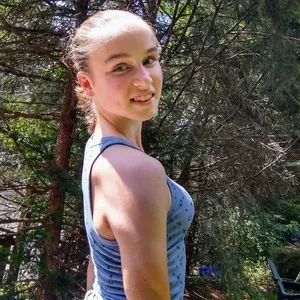Indigenous Peoples’ Day is coming up on October 9. This holiday “celebrates the invaluable contributions and resilience of Indigenous peoples, recognizes their inherent sovereignty, and commits to honoring the Federal Government’s trust and treaty obligations to Tribal Nation,” according to a 2021 White House proclamation.
But Indigenous Peoples’ Day wasn’t always recognized, much less celebrated, by the federal government. The fight to have that happen has been a long one, Mariah Gladstone, a citizen of the Cherokee Nation and a descendant of the Blackfeet Nation, told Spoon University in an interview. “We recognize that this transition away from celebrating someone with genocidal actions to celebrating centuries of resistance and resilience,” she said. “When it comes to food, agricultural, and culinary brilliance has been a really hard fought journey.” Gladstone is the founder and host of indigikitchen, an online cooking show and food blog celebrating indigenous food systems.
Even when Gladstone was in college, the university still had Columbus Day listed on the school calendars. “Some states were starting to switch to Indigenous Peoples’ Day and some states were fighting like hell to make sure it didn’t happen.” But, she continued, “I love that we can have a day where we can truly celebrate. We as people, whether indigenous or not, can recognize all these incredible cultural contributions of indigenous people and the resilience and survival that has taken place for indigenous people to still be here practicing our cultures in ways that make sense for us in the 21st century.”

Why indigenous food systems are so important.
It’s important for people to understand that the work to destroy native food systems was intentional, and so the work to restore them has to be intentional too, Gladstone emphasized. “Foodways have been used to control native people,” she said. “You can look at the near eradication of Buffalo populations, targeting native nations that depended on them. You can look at the burning of fields and seed banks.” Two-thirds of the food that’s eaten around the world has its origins in North and South America, from potatoes to corn to tomatoes, so thinking about indigenous food systems or indigenous foods isn’t that difficult, Gladstone added. “Recognizing the agricultural wisdom that has led us to have those foods means recognizing indigenous food knowledge.”
Here’s how to celebrate Indigenous Peoples’ Day through food.
For college students looking to celebrate and honor Indigenous Peoples’ Day through food, Gladstone suggests finding ways to eat what she calls the OG polyculture. “It’s known across Turtle Island or North America as the three sisters, and it refers to the system in which corn, beans, and squash were planted all together,” she said. “Physically, they support each other. Corn grows tall and straight, beans use corn as a trellis, and squash spreads out on the ground. And beans have nitrogen fixing bacteria in their root nodules which helps enrich the soil of nutrients that the other two are depleting.”
The three sisters system is good for both soil health and overall food production, and corn, beans, and squash form a complete protein when eaten together, Gladstone added. She suggests making a three sisters soup or salad, or even enchiladas with a bean and squash filling and corn tortillas. “You can have a celebration of indigenous agricultural wisdom, but also find cool ways to eat these foods that most people are already familiar with.”
Additionally, you’ll find regional variations of the three sisters across the country. “The same plants that grow in the northeast are not going to grow the same in the southwest, but Haudenosaunee nations and Hopi people both grew corn, beans, and squash,” Gladstone said. “The varieties just depended on the resources, the soil, the humidity, the water available. I think it’s a cool way of celebrating agricultural knowledge, but also food and sustainable agricultural methods.”
For some easy and delicious recipes using indigenous ingredients, check out indigikitchen.com, where Gladstone shares dorm-friendly dishes like butternut bison lasagna and sunflower butter popcorn. “I was stress cooking in college, so I would end up bringing a whole bunch of food to the rest of my dorm floor at 2:00 AM,” she said. “I got to experiment a lot with food because of that, and so the recipes that I made are made very much for college students.”
Gladstone also recommends learning more about the plants in your area. “Go on a cool plant walk and learn about edible plants. There’s a ton of things out there. Almost all conifer trees can be turned into tea that’s super high in vitamin C and really delicious,” she said. “It’s basically like having free emergen-C. As long as you can identify yew trees, almost every other conifer is edible. Yew is poisonous. If you can learn that one, you’re good. And you have a bunch of great immune-boosting tea to help you get over colds.”
Delicious immune-boosting tea sounds great, but that’s not the only benefit to developing your ecological knowledge. Learning more about plants in your area will help you feel more grounded. “Whether you’re going to school away from home or in an area you’ve grown up in, it helps you feel welcome in that place,” Gladstone continued. When you recognize the gifts that place is giving you, whether it’s cool edible berries or trees that can be boiled into tea, you will feel a sense of reciprocity and a need to give back to that place, she added. “It’s that idea of stewardship, that whoever you are, you have a responsibility to take care of the land because it’s also taking care of you. And when you recognize that, you can feel more grounded and more welcome and more at home in those places.”
For more information about indigenous food systems, Gladstone suggests checking out NATIFS.org.


